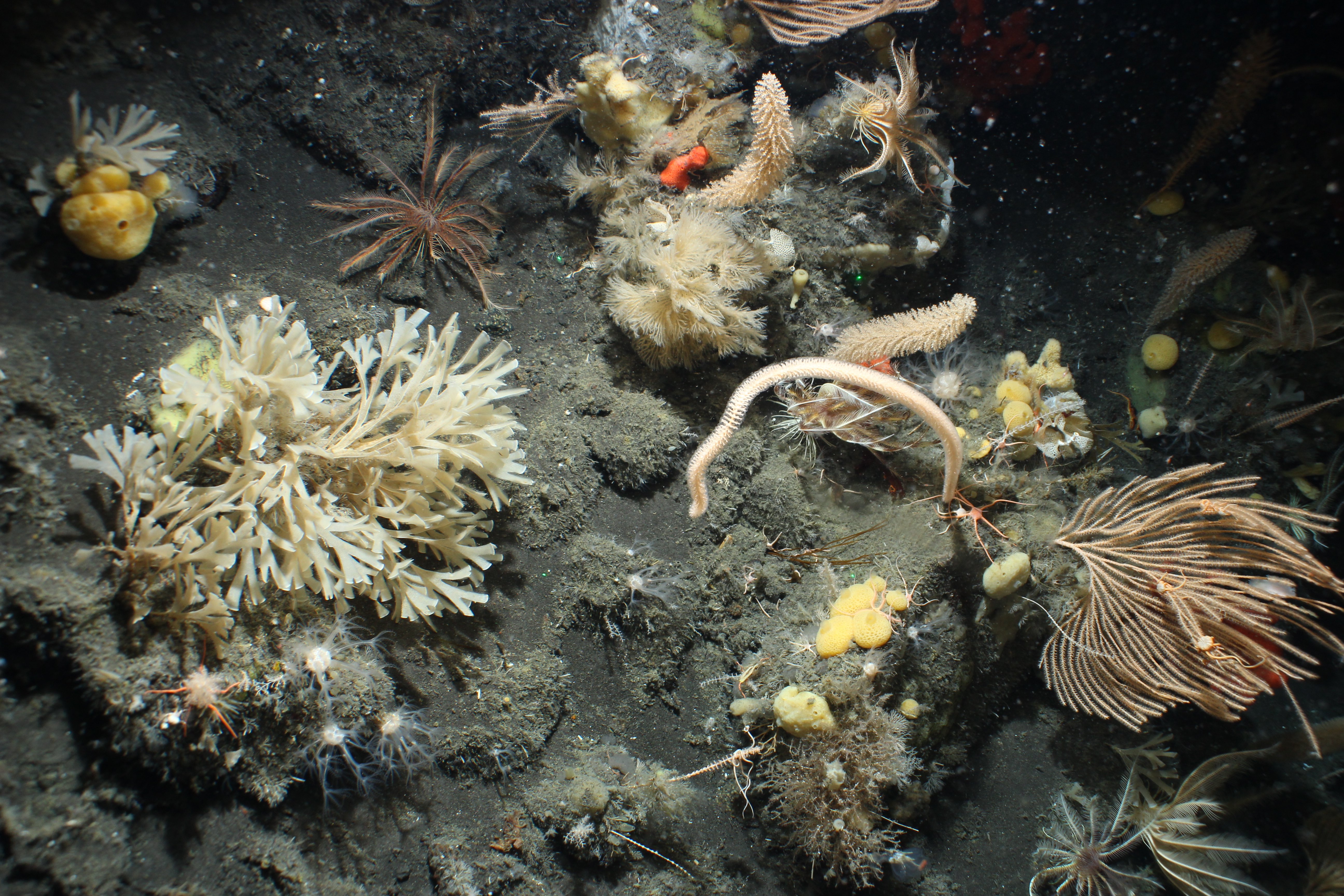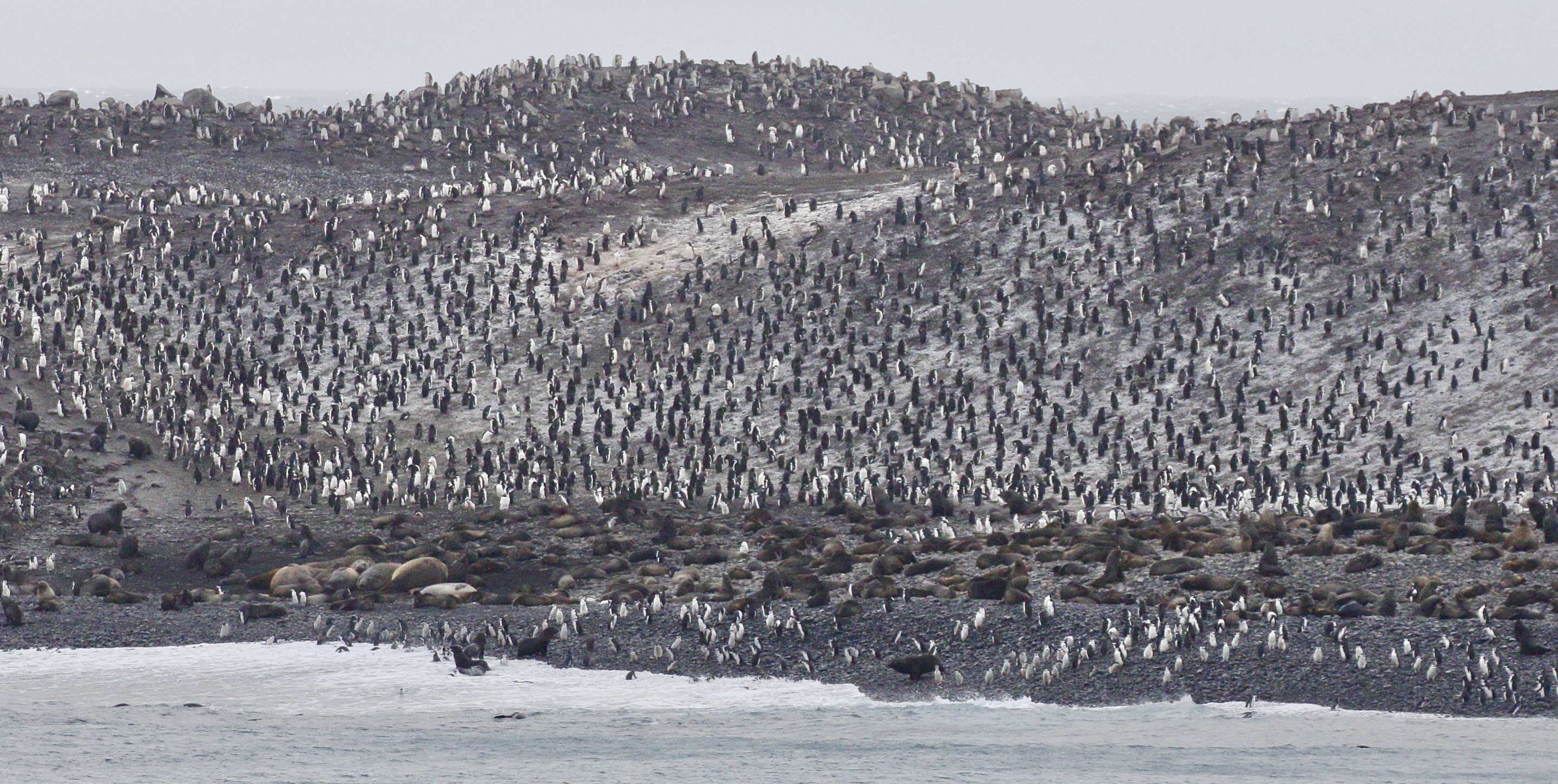Shaped by ice and fire, the volcanic South Sandwich Islands are a remote sub-Antarctic archipelago that have remained largely uninhabited since their discovery by polar explorers in the 18th century. In winter, sea ice extends northwards across the two hundred miles of the archipelago encasing most of the islands in its frozen grip, before retreating again in the spring when the regions waters bloom with life. This remote UK overseas territory is home to vast colonies of penguins and other seabirds, including an estimated one third of the world’s population of chinstrap penguins. It is also part of the South Georgia and South Sandwich Islands Marine Protected Area (MPA), one of the world’s largest, covering 1.24 million km2 (an area 5 times larger than the UK). Beneath the water, due to the proximity to nutrient rich currents and the islands’ position in the sea-ice zone, a wide range of marine habitats flourish, making the region both productive and biodiverse. Even so, their remote location means that little was known about the islands’ environment and ecosystems.
This is changing. Now a special collection of scientific papers featured in the Journal Deep Sea Research Part II, has been dedicated to the South Sandwich Islands. Scientists from the Centre for Environment, Fisheries and Aquaculture Science (Cefas) collaborated on several of the papers with researchers from around the world to shed light on and provide new insights into this unique environment.

So why the interest in this remote and uninhabited region? In 2018, a review of the MPA - supported by the UK’s Blue Belt Programme - concluded that it was working effectively, but that knowledge gaps existed around the South Sandwich Islands. With the next review due to take place in 2023, scientists specialising in a broad range of topics, from seabed dwelling invertebrates to penguins, migratory whales and fish, came together to help address some of those gaps. The new information continues to support effective marine management of the region.

This collection of scientific papers takes the reader on a journey from the islands’ coastal waters to the mysterious deep ocean trenches. Some of the highlights from this special collection include:
- A better understanding of how the unique topography and location of the islands influences the large-scale currents in the region, deflecting the main Antarctic Circumpolar Current northwards, resulting in a colder environment than the adjacent island of South Georgia.
- Several studies explored life on the seabed deep below the surface. A deep camera dive into the South Sandwich Trench to over 8 km depth revealed how globally unique this environment is and found several fish and invertebrate species living in this high pressure, low temperature environment. Hydrothermal vent activity was also discovered as deep as 3.6 km.
- While the seabed biodiversity of the South Sandwich Islands was explored recently during a UK Government Blue Belt survey (see research here), the scavenging communities of the deep sea are described for the first time in detail.
- Away from the seafloor there is a plankton community rich in species and productivity, and here too the structure of the pelagic community was dependent on temperature, but also on sea ice and the Antarctic Circumpolar Current. These findings suggest that both the seabed and pelagic communities may be vulnerable to climate change if temperatures in this region change.
- The region’s waters are also home to several types of predators. Below the surface live two species of toothfish, who both face the challenges of being at the range edge of their distribution. Tagging individual fish revealed that the Patagonian toothfish are linked closely to the adjacent island of South Georgia, while the Antarctic toothfish are linked to regions further south.
- Home to millions of chinstrap penguins, there is now a much better understanding of where they go to feed when they rear their chicks. This helps to ensure that fisheries do not interfere with feeding, and that the management and monitoring of the MPA continues to protect their habitat.
- For the first time there is information on the movement of humpback whales around the South Sandwich Islands when foraging for food, moving from there westwards toward South Georgia and the Scotia Arc in summer, and back eastwards in winter.
- Although remote, the region is not pristine and has been subject to historic exploitation. The region currently supports small, sustainably managed fisheries for two species of toothfish. This special issue tells the story of these islands from their sealing and whaling past to the present-day role of the regions’ MPA in supporting sustainable marine management.

This latest work sits alongside a decade of scientific research and advice by Cefas in the Southern Ocean. Working with the Government of South Georgia and the South Sandwich Islands, Cefas provides advice and expertise to ensure their fisheries are managed in a sustainable way and are underpinned by robust and transparent science through the continual assessment of fish stocks. Through the UK Government funded Blue Belt Programme, Cefas scientists have led targeted research expeditions to the region, and continue to work with the Overseas Territory governments and the fishing industry to better understand the diversity and distribution of biodiversity on the seafloor through the use of deep-water camera systems and sensors. The outcomes of these studies and the findings of this special issue will help support evidence-based decision making through the upcoming MPA review and beyond, ensuring South Georgia and the South Sandwich Islands continue to be recognised as a world-leading example of sustainable and precautionary marine management.